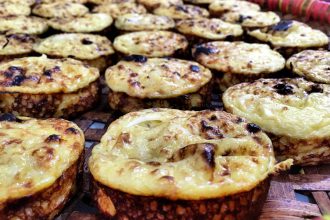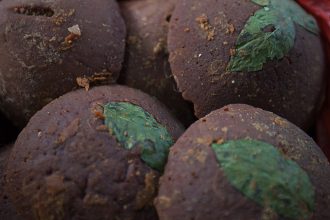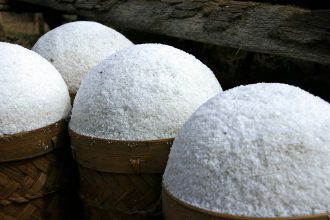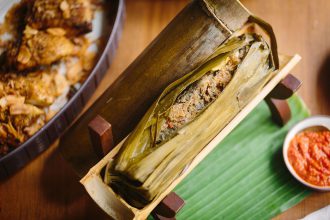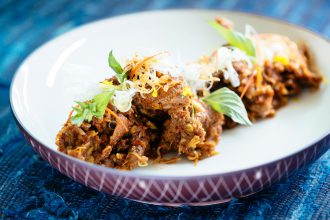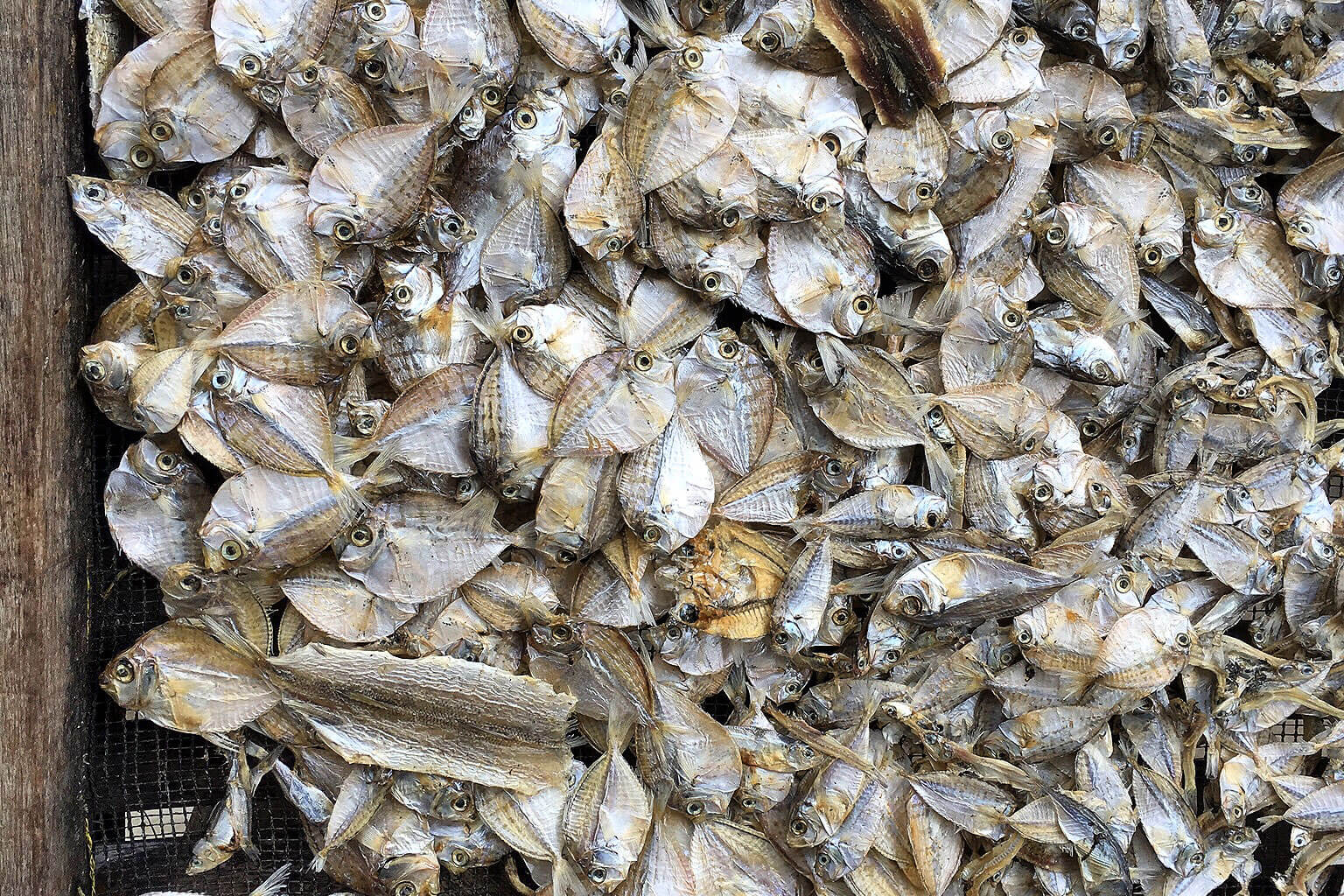
For many Indonesians, salted fish is one of life’s simple pleasures. We are perfectly content enjoying steamed rice, salted fish and a fiery sambal (chilli relish), devouring all with our right hand. Happiness is purely simple for most Indonesians!
A Thousand Islands, A Thousand Types of Salted Fish
Like in many Southeast Asian countries, Indonesia produces salted fish using different methods of curing. Drying or salting, either using edible salt or brine, is one of the oldest methods of preserving food. Salt inhibits the growth of microorganisms by drawing water out of microbial cells through osmosis. Most bacteria, fungi and other potentially pathogenic organisms cannot survive in a highly salty environment, and at the same time the salt gives a unique savoury flavour to the fish.
Since Indonesia is the largest archipelago in the world, our ocean hosts a diverse array of edible creatures, many of which can be found salted in local markets. The variety of fish, methods of curing, types of salt used, and environment also determine the flavour of Indonesian salted fish products. The air contributes flavours to the fish, thanks to a symbiotic ecosystem of microbacteria varied from one to another that live in the air. That’s why most products dried under the sun have a signature taste that can only be produced in that region.
From experience, we know that drying under low heat using a dehydrator or oven definitely creates a different taste and texture. We tested some methods in the Kaum kitchen, but tropical sunshine is still our favourite method to produce excellent taste.
One of Kaum’s core tenets is “taste of origin” and it can definitely be found in Indonesia’s salted fish products. Most of you probably know the famous Ikan Teri Medan (salted anchovies from Medan, North Sumatra) and Ikan Jambal Roti Pantura (salted giant catfish from northern coast of Java), which vary distinctively in taste because they are produced from different regions.
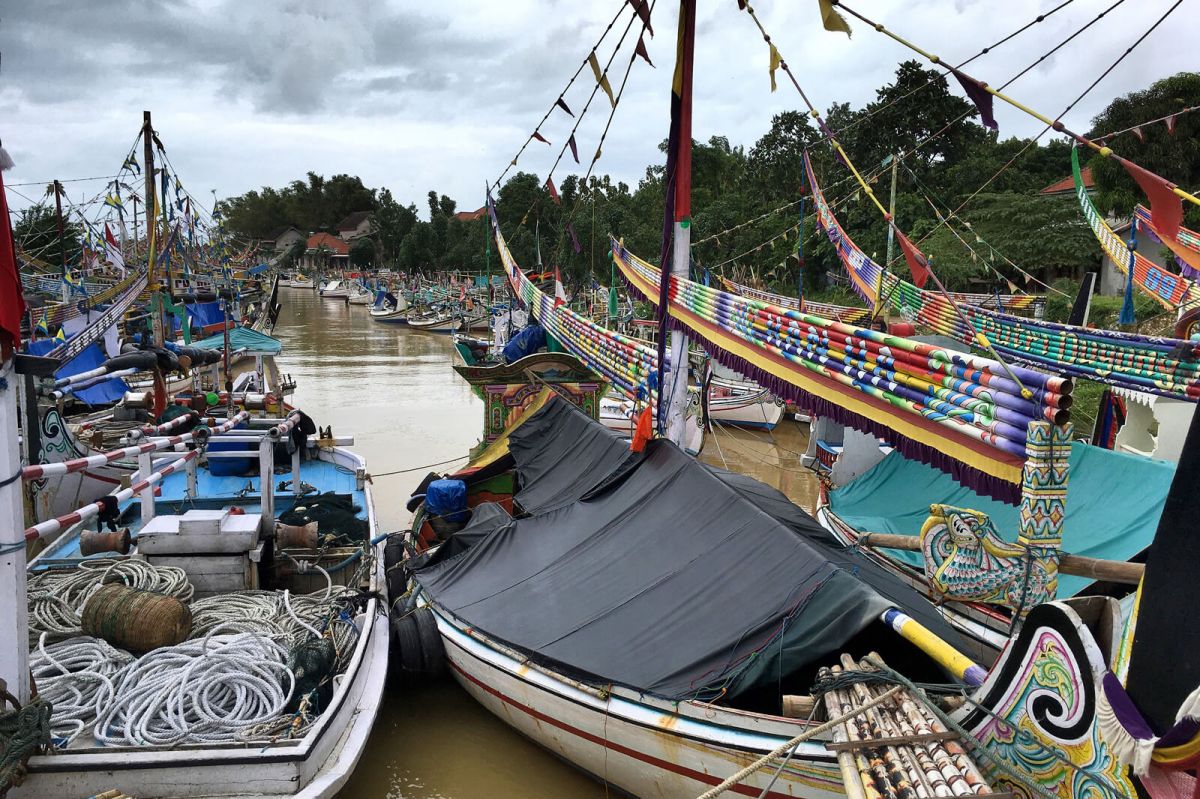
Gone Fishin’
Chef Antoine Audran and I recently hit the road in search of the best salted fish. We headed to Madura, an exotic island located between Bali and East Java, because of its underrated image among Indonesians, but we were pleasantly surprised! In fact, we encountered mind-opening experiences on the island, particularly when we visited Talang Sari village. We were determined to find the village producing the best salted fish in Madura and finally, after much persistence, found it. We were made amazed by amount of love and dedication these small-scale producers put into guarding traditions and preserving the authentic taste of Madura in their products.
In Talang Sari, sun-dried fish is made without the addition of salt, making the texture crispy and the taste less pungent. Thanks to intense sunshine near the coastline, Talang Sari sun-dried fish has an incredibly flaky texture and is quite light. What is also amazing is that the producers still use their fingers to debone and clean the anchovies each morning. When I asked one of them whether I could help her clean the anchovies, she smiled and politely declined saying I would hurt my fingers. Ouch!
Bringing Indonesia to Kaum
Exploring Indonesia is a great way to learn about tastes and cultures. For us, it is a priceless experience to connect with nature and producers who honour tradition. When we find something extraordinary,, we showcase it at Kaum. You’ll be happy to know that we are proudly incorporating the Talang Sari sun-dried fish into selected Kaum dishes, like many others specialty products found across in the archipelago, so you can taste them for yourself.
CONTINUE THE JOURNEY
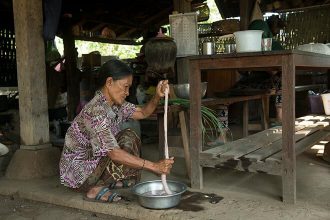
Singaraja totally captivates us…”
Lisa Virgiano is brimming with enthusiasm for the local produce she and the Kaum culinary collective have discovered in Bali’s oldest port.
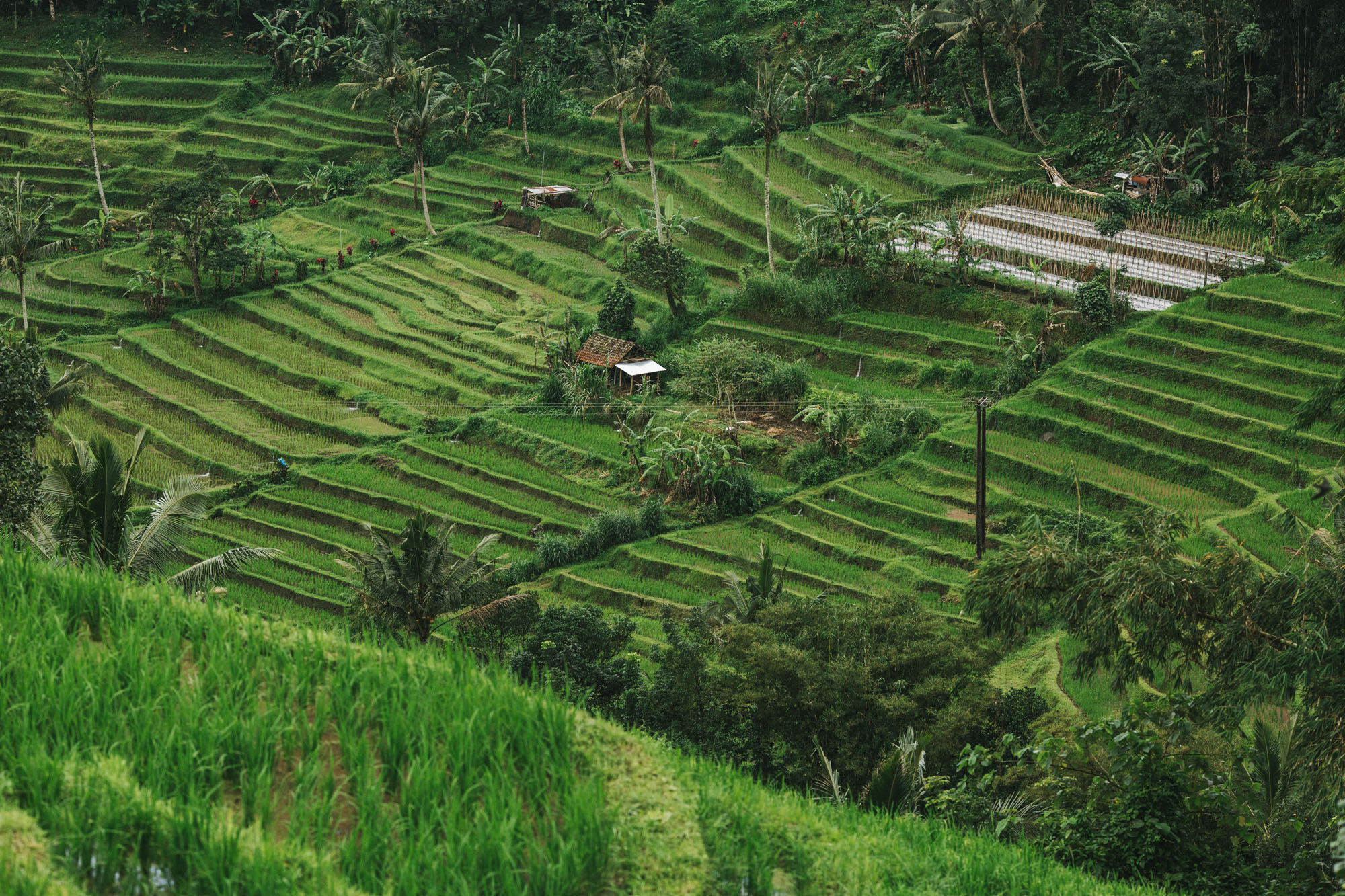
Rice is an essential commodity in Indonesia. Nowadays, most Indonesians think of rice not only as an indispensible component to any meal, but also as a kind of “sacred” staple. But has this forever been the case? Have Indonesians always consumed rice as part of their daily diet?
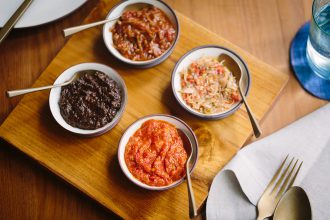
Chilli relish (sambal) is an imperative Indonesian condiment, served with almost every Indonesian dish. It arouses the appetite, ignites the senses, and complements the taste.
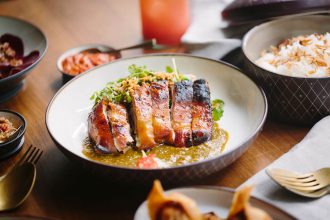
Bali has been part of the Asian trading network since the 15th century. Traders from Java brought rice and salt which could later be exchanged for cash crops, including pepper from Sumatra, spices from the Moluccas, and cotton from Bali.
